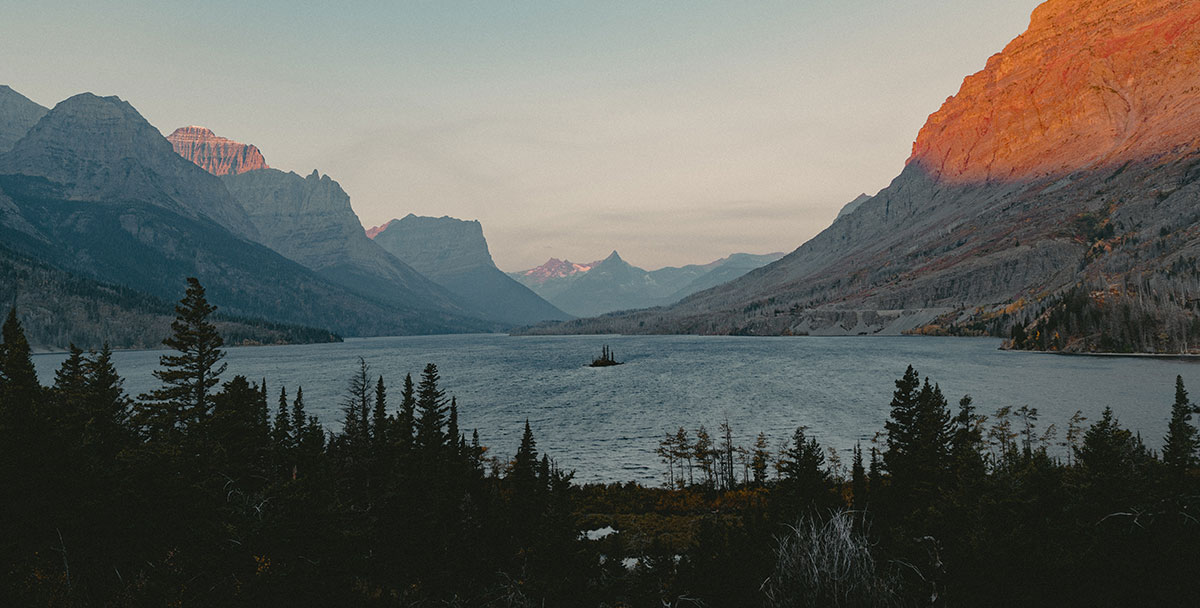Not everyone has the luxury of a large outdoor space to call their own, instead relying on parks, shared spaces and ventures to the country for their time in nature. But nature is everywhere, and you can bring it into even the smallest, least forgiving spaces.
Maybe you have a small yard or a balcony. Maybe there’s an easement between the sidewalk and street outside your apartment. With a bit of sunshine and diligence, even an alleyway can be turned into a welcoming, functional and aesthetically pleasing ecosystem.
Here are five ways to maximize the environmental boon of even the smallest patches of green space.
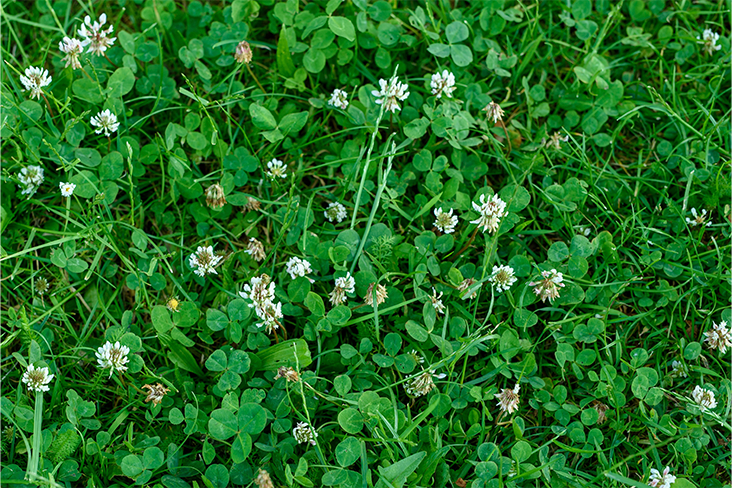
Replace Your Lawn With Clover
Not only are lawns poor ecosystems that absorb lots of resources to grow, but they require a good deal of maintenance. According to the Environmental Protection Agency, running a gas-powered mower for one hour produces as much emissions as running 11 new cars for the same amount of time. Even electric mowers aren’t perfect – discarded batteries aren’t recyclable and contribute chemicals to landfills.
If all you have is a small lawn or an easement to tend, you’ll be much better off replacing the fescue with something that contributes more to the environment and doesn’t require a clunky machine to maintain it. Planting clover will give you more cold- and heat-tolerant ground cover, requiring no additional watering.
White clover, in particular, is great for fixing nitrogen in the soil, and its dense root system helps prevent soil compaction while providing erosion control. Unlike turf grass, clover does not need to be seeded annually or mowed regularly, and it still looks great even when the stalks grow long. Overgrown clover provides a great habitat for bees, butterflies and other pollinating bugs that use its pinkish-white flowers for food.
White clover is available at most lawn and garden stores. It only requires a little watering to start the seeds. You can kill off your grass lawn and replace it wholesale, or you can overseed with clover and watch the herbaceous growth take over slowly.
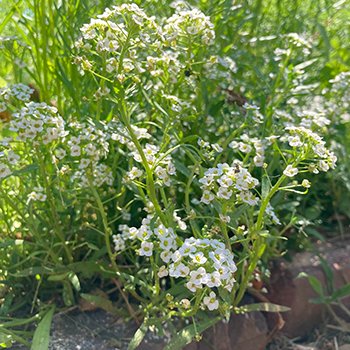
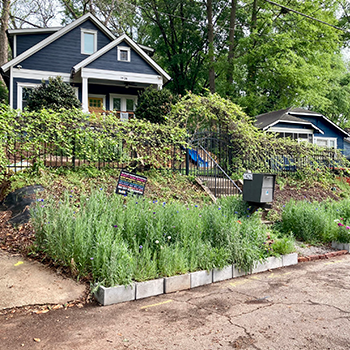
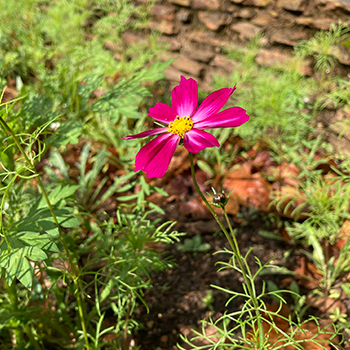
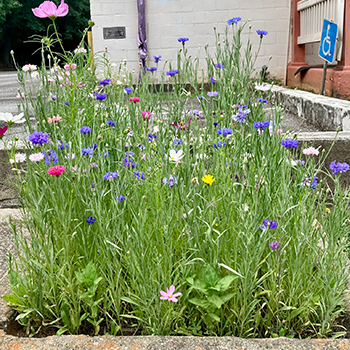
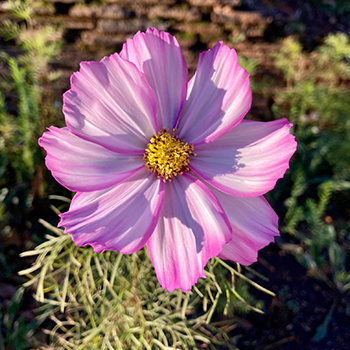
Sow a Slew of Native Wildflowers
Austin L. Ray knew he’d never catch up to his dad. The Atlanta writer had grown up on a farm where cosmos, zinnias, milkweed and sunflowers spread over open acreage. A wildflower nirvana wasn’t possible in Ray’s small city yard, so he decided to tear up a 6-by-40-foot easement lawn in front and turn it into a waypoint for pollinators.
Then he did another for his brother and another along a bike path. Before long, he was Atlanta’s Johnny Flowerseed, sprinkling wildflower seeds in any open soil he found. It was just so easy.
The steps are simple: First, you clear the ground (or find freshly turned soil that hasn’t been overtaken by something else). You may need to add compost or more soil. Then, you sprinkle your seeds. Seeds can easily be bought, but you can also harvest your own seeds from existing local flowers. Flowers that are native to the area will do better because they’re adapted for living in the weather conditions. Watering will help speed up growth, depending on when you plant, but it may not be necessary.
Nonprofits like the Urban Butterfly Initiative and the Pollinator Partnership offer free practical advice and training on sowing native gardens. Governments are also invested in transforming small, mundane spaces into more functional ecosystems, just like Ray’s been doing in Atlanta. Grants are available through the National Fish and Wildlife Foundation and National Garden Clubs to cover the costs of the project.
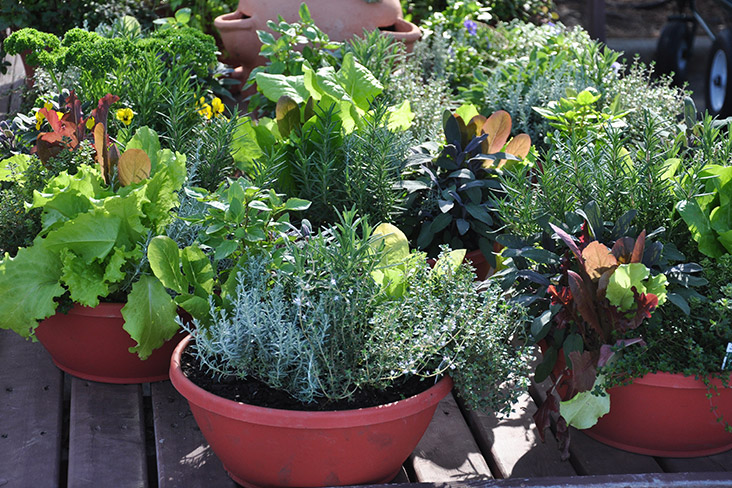
Build an Edible Container Garden
Have you ever bought a bundle of mint or cilantro for a recipe and ended up throwing away the slimy refuse days later, all because it was more than you needed? Food is the single most common item sent to U.S. landfills. The Environmental Protection Agency estimates that 24% of municipal solid waste is food waste. But you can help reduce that ratio by growing more of your own food.
A planter garden can give you exactly what you need, when you need, with much less being chucked into the bin in the end. You don’t even need ground to start – any sunny balcony or roof space will do. Start with kitchen herbs grown in inexpensive terra cotta. Rosemary, parsley, basil and sage can be purchased at any grocery store. Replant them at home and place them in at least four to six hours of direct light per day (accommodating for each herb’s individual needs).
Once you get that down, you can move on to bigger containers, such as 5-gallon buckets, and you can start propagating plants from the produce section. Save the root end of your scallions, and you can regrow them over and over. Same goes for celery, bulb fennel, onions, potatoes, carrots and all manner of lettuces and cabbages.
Container gardens can also be gorgeous decorative pieces. See gardener/designer Sara Gasbarra’s work for inspiration on how to make your food source the most eye-catching part of your outdoor decor.
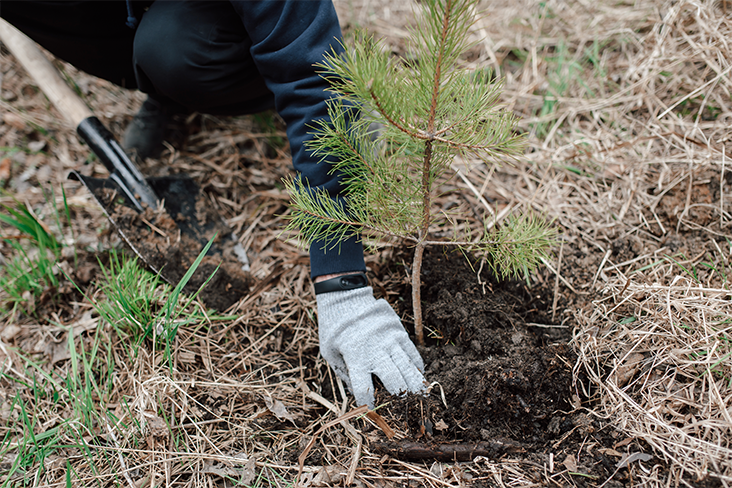
Create a Mini-Forest
How large does a forest need to be? According to the work of Akira Miyawaki, the answer is three trees per square meter.
The Japanese botanist and ecologist developed the Miyawaki Method to help Japan reestablish its old-growth forests in just a fraction of the time. It takes time and dedication on behalf of the gardener, but once established, Miyawaki mini-forests grow 10 times faster, are about 30 times denser, and contain 100 times more biodiversity than normal urban forestation.
The process works in four steps. The first step is research. You’ll need to know what trees and shrubs are native to your area and suited to the environment. The National Wildlife Federation has a great tool for this. The second (and most arduous) step is to prepare the soil. You’ll need to till and completely decompact the dirt, adding in organic compounds and hydrating. Then, it’s time to plant.
Starting with saplings will ensure your mini-forest establishes quickly. A central tenet of this method is diversity, so you’ll need three to five trees per square meter. And finally, you mulch the soil with organic material (think pine straw or fallen leaves). This will create a habitat for bugs and fungi while also retaining water in the soil, but you’ll also need to maintain the area as the plants are getting established.
Within three years, the forest will require no maintenance and the most adapted plants will thrive. Invasive plants will not be able to compete with the natives, and a scale old-growth forest will establish within 20 to 30 years. In the meantime, you’ll be able to bask in the satisfaction of having built a slice of climate-durable nature in a space that was once choked by dirt and weeds.
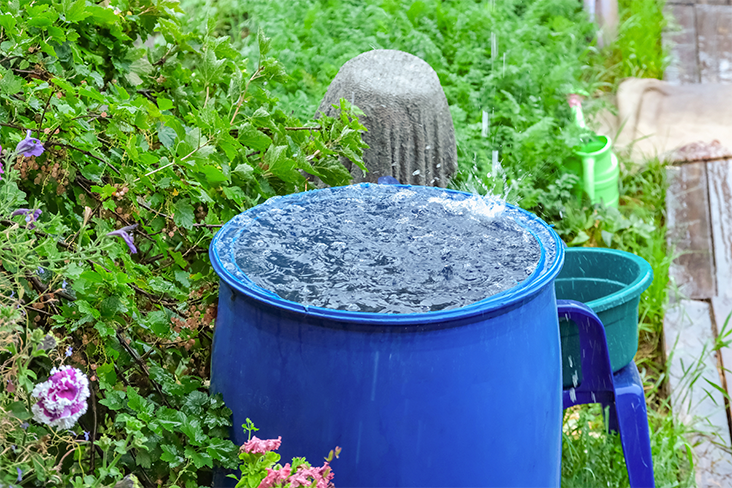
Harness Stormwater Runoff for Good
With so much concrete and asphalt, much of the stormwater that falls on American cities is never absorbed into the ground. Instead, it’s routed into storm drains, where it carries pesticides, chemicals and organic waste into municipal waterways.
Rain gardens help to prevent this pollution by providing a depressed area for rainfall to collect, absorb and be filtered by grasses and perennials. Dig a spot near a downspout or street drain, excavating somewhere around 6 inches, depending on the slope of your space. Plant the area with native plants, which will tolerate the cycles of watering and drought best.
If a landscaping project of that level isn’t possible in your space, you can still slow down stormwater absorption by catching rain for personal use. Rain barrels can be made out of just about any plastic bin, and simple diversion drains are cheap to buy if you don’t feel like making several trips to the hardware store.
However you collect it, rainwater is a delightful treat for indoor plants because it’s free of the minerals and chemicals that come in tap water. If you do any at-home gardening, getting a rain barrel can cut your water bill down while also solving one of the hidden ecological costs of living in the city.





